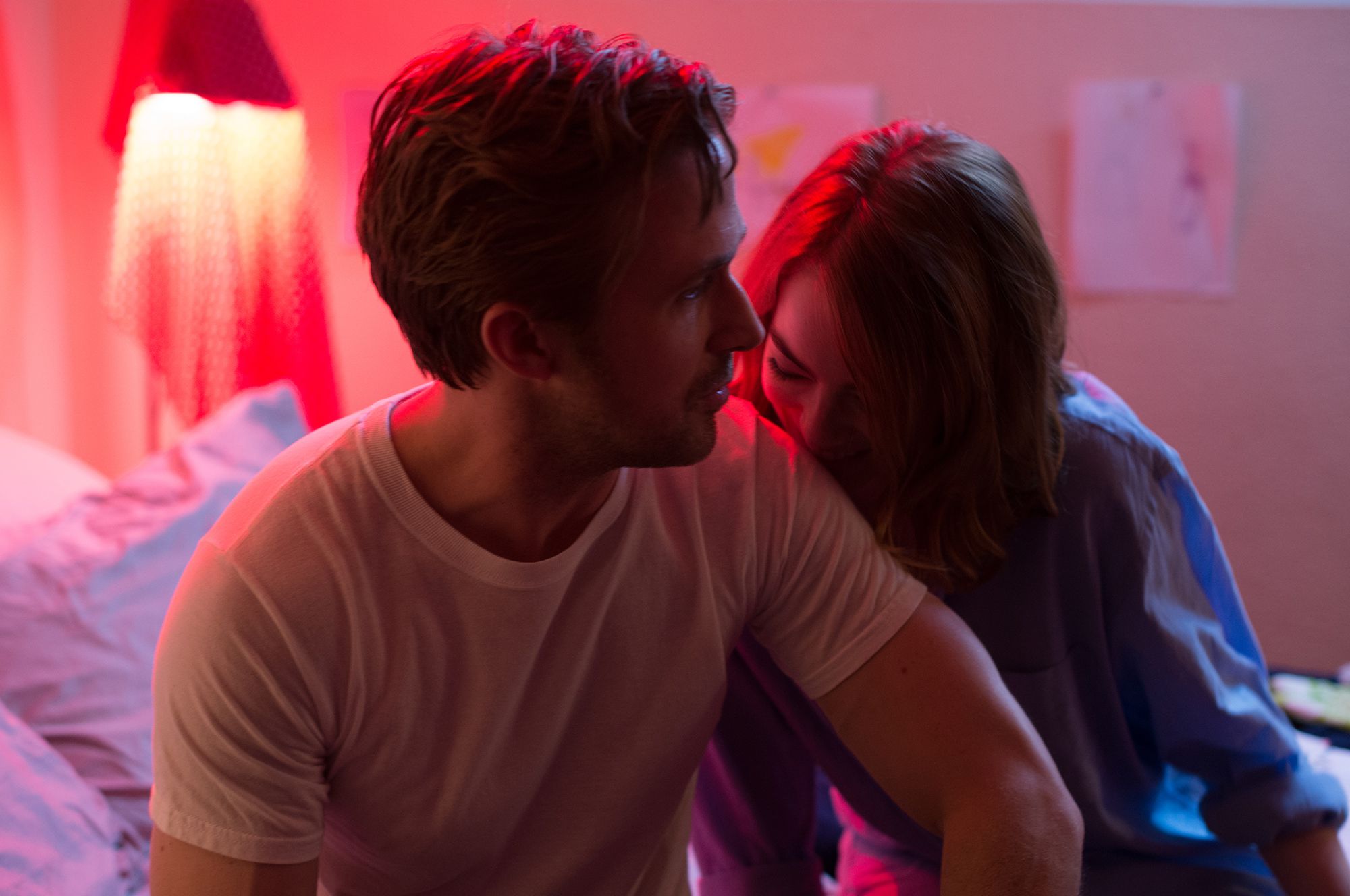Table of Contents Show
La La Land (2016; Damien Chazelle) is arguably one of the most artistically mastered and visually detailed movies of the decade, starring wildly-praised actress Emma Stone and actor Ryan Gosling. A few of its many achievements include winning Best Production Design and Best Cinematography at the 2017 Academy Awards. Many critics wonder why La La Land gained so much acclaim and adoration; a simple answer would be its extremely masterful and innovative approach to developing heart-wrenching themes conveyed through art and music. The musical incorporates artistic elements such as color theory, center placement, visualization with music, and more to connect and finalize the ongoing themes of the movie. Its method of theme progression with the use of music and art set a landmark of inspiration for future films. Each section of La La Land observes how the theme of loving the right person at the wrong time developed throughout the film by using artistically inclined elements.
What Is La La Land About?
La La Land focuses on the lives of two main characters: Mia Dolan and Sebastian “Seb” Wilder. Both are passionate in the acting and music industries, respectively- and they have worked their whole lives to reach their dreams. They both start the film in rather “beginner” positions; Mia as a hopeful aspiring actress, auditioning in multiple shows (but never getting the roles), and Seb as a jazz pianist dreaming of being able to share his talents with the world professionally, not just as a part-timer at a restaurant. They embark on a fateful destiny throughout La La Land to endeavor on their careers as well as their relationship- but many obstacles await them in their journey.
Chazelle’s Artistic Introduction
We start with the perspective of Mia Dolan, a current cafe barista and aspiring actress, heading to yet another audition. Her car is stuck in traffic among many other drivers, including Sebastian “Seb” Wilder, a jazz pianist who wishes to hit the big leagues and play professionally. The dreaded, exhausted feeling of being stuck in traffic is displayed in a new light by La La Land. A break in the silence occurs with the first soundtrack of the musical, “Another Day of Sun,” featuring enthusiastic, soulful people joyfully dancing around and atop of cars in traffic, illuminating the boring drive.
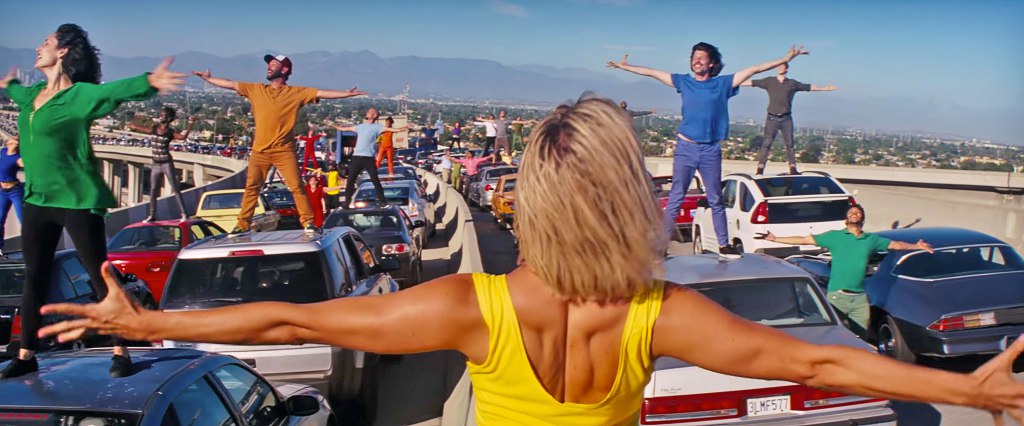
The simplicity of the scene is what makes it so admirable; it is as if Mia and Seb don’t see the impassioned, jubilant singers dancing about on the highway. Seb had repeatedly been listening to a piano piece on his car speaker, seemingly trying to get the timing and precision of the piece right. Mia was practicing for an audition, wanting to perfect it in the same manner. Both of them are completely focused on their work, while the sequence of dancing and singing takes place around them unnoticed. The first number of the movie had begun and ended with a statement, as well as Mia and Seb’s first interaction by a mishap of road rage. After Mia reaches her audition, it is implied that she didn’t get the role after accidentally spilling coffee on her shirt and having the casting director interrupt her to talk to a coworker about auditioning a more successful actress in the middle of Mia’s depiction of an emotional scene.
She gets home and intends to have a somber, work-filled night to herself when her girlfriends insist that she attends a party with them in order to meet her “special someone.” Mia accepts, but she unsuccessfully has no luck at the locale; she also gets her car towed, having to then walk home in the dark blue twilight of Hollywood. The gloomy night is quiet until she passes a jazz bar, where she overhears Seb performing an original piece. She is so captivated by the song that she enters the bar and sees the man she encountered that morning. This was the most influential point of the movie, introducing arguably the most artistically established track in La La Land, “Mia and Sebastian’s Theme.”
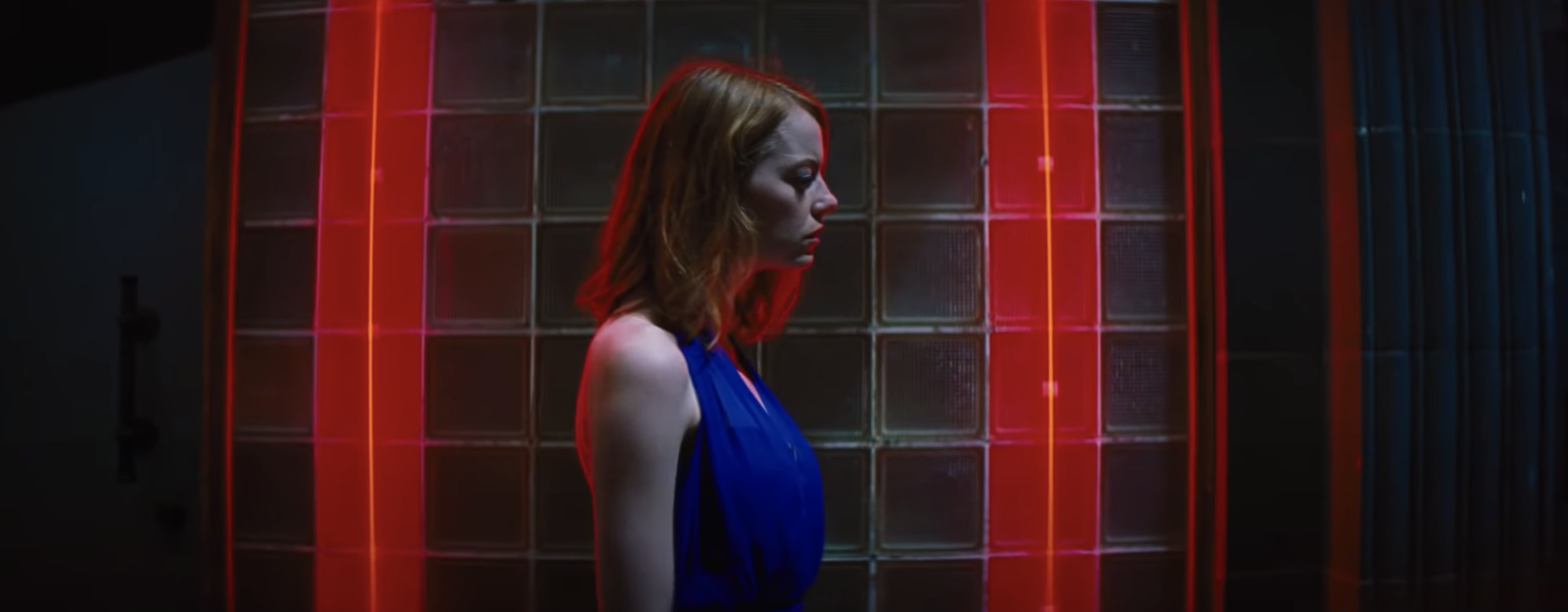
However, their individual moments of harmony were interrupted once Seb was fired for not sticking to his protocoled order of playing Christmas songs, brushing past Mia before she has a chance to express her admiration for the piece. They don’t see each other again until they happen to be at the same event, Mia as a guest and Seb as a part-time performing pianist for a funky 80s-focused band. They humor each other over their unintended encounter and rehash last night’s events, with Seb reluctantly apologizing. After the party is over, Seb decides to walk with Mia to find their cars, knowing that his car was right outside the venue. On the walk, they point out how odd it was that they kept running into each other and declare it a coincidence. Seb proposes that it may mean something, but Mia quickly shuts down the offer. They continue to look for Mia’s car, the blue city-scape dusk of Hollywood illuminating behind them, thus initiating the “City of Stars.”
La La Land‘s A “City Of Stars”
After a long while of not finding Mia’s car, the two walk a little further to find themselves in front of a view of the city and a singular street light. The color scheme of this scene follows a complementary pattern of the blue and purple tints of the city night to Mia’s yellow dress- Mia’s outfit also follows a primary color scheme, with her yellow dress, red bag, and blue shoes. This artistic pattern is reused multiple times throughout La La Land with Mia’s character design. Here begins the transition to the dance number in the song “A Lovely Night,” where Mia and Seb subtly break out into a tap-dance routine. Even though the song’s lyrics showcased them lamenting not being with someone else, making it a “waste of a lovely night,” they share an obvious connection of passion with their dance.
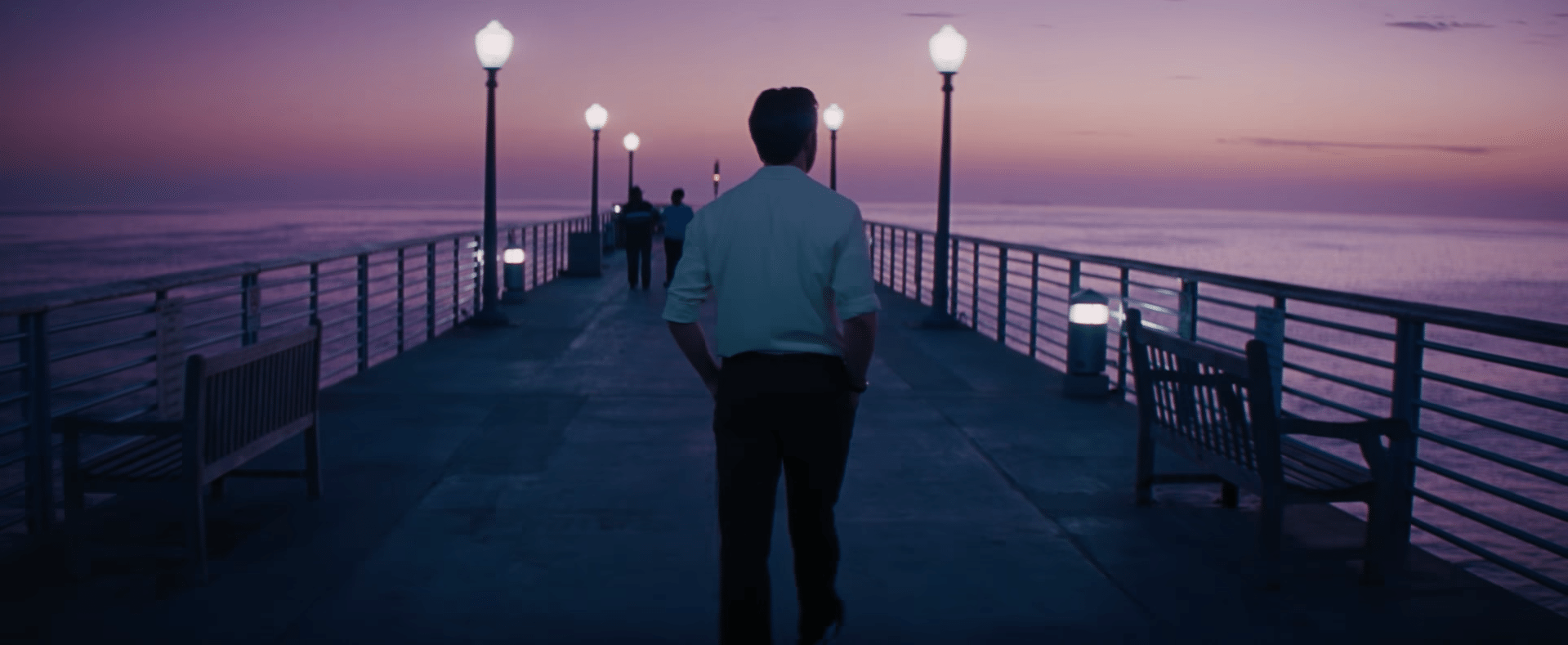
The almost illusory element of this scene is brought to an abrupt end when Mia’s iPhone rings off, bringing them back to reality. Mia immediately finds her car after one click of a button, and Seb heads back to where his car had been parked in front of the venue, feeling distraught and confused. Seb doesn’t go home immediately. He stops by at a bridge towering over water where there are a few dimly lit lamp posts, the sun setting in the background. There is also an elderly couple dancing. He begins to sing a ballad version to “City of Stars,” shifting the scene into a lulling atmosphere as he reflects on his time with Mia and how he thinks of her.
An Unexpected Date
After the lovely (but not so lovely) night, Seb had visited Mia at the cafe she works at, where she took him to the production sets located around her, expressing her passion for acting while he revealed his passion for jazz. Mia had mentioned that she, however, hated jazz- Seb couldn’t take this as an answer and took her to a jazz bar. There, Mia received a call from a casting director for a show she had never watched before in which Seb has. He asks Mia if she wanted to see a screening of the show with him, and she accepted without hesitation, forgetting she had a date planned with her boyfriend. Halfway through her date, feeling out of place and uninterested, she overhears their theme playing through a speaker, which prompts her to decide to meet with Seb instead.
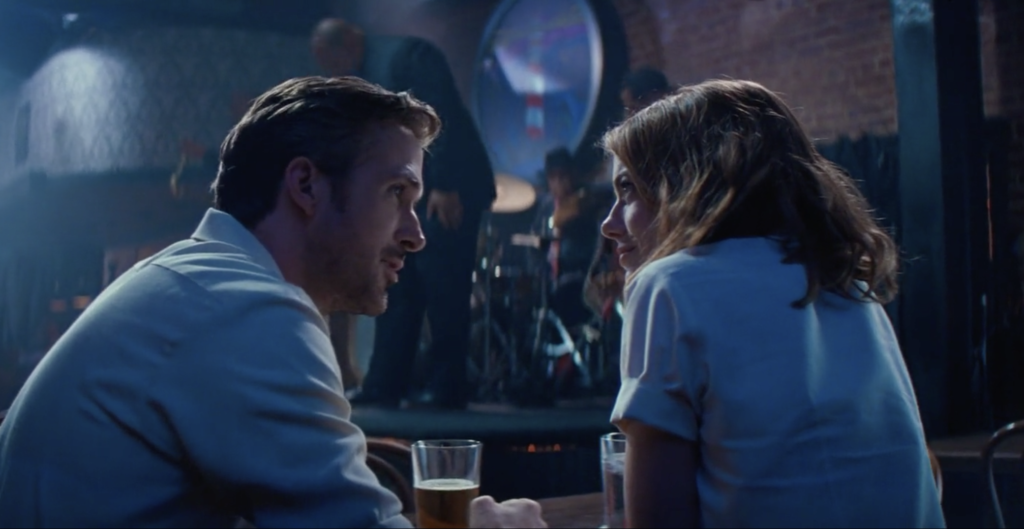
A swelling, orchestral version of the theme song is played as she rushes to the theatre where they had planned to be. Yet as soon as Mia arrives, an error occurs with the movie’s screening, prompting Mia to propose visiting the Griffith Observatory where they would witness the Planetarium. The two embarked on a magical experience as an orchestral, flute-filled version of “Mia and Sebastian’s Theme” played in the background while they danced around the Observatory. They then head inside to gaze at the planetarium’s scenery until they are suddenly lifted into space with a stunning swell in their song, now becoming orchestral with the accompaniment of violins and other instruments. They continue to dance throughout the stars and planets, along with their elevated theme. They finally head down again to be seated next to each other as they share their first kiss with a bang in the music.
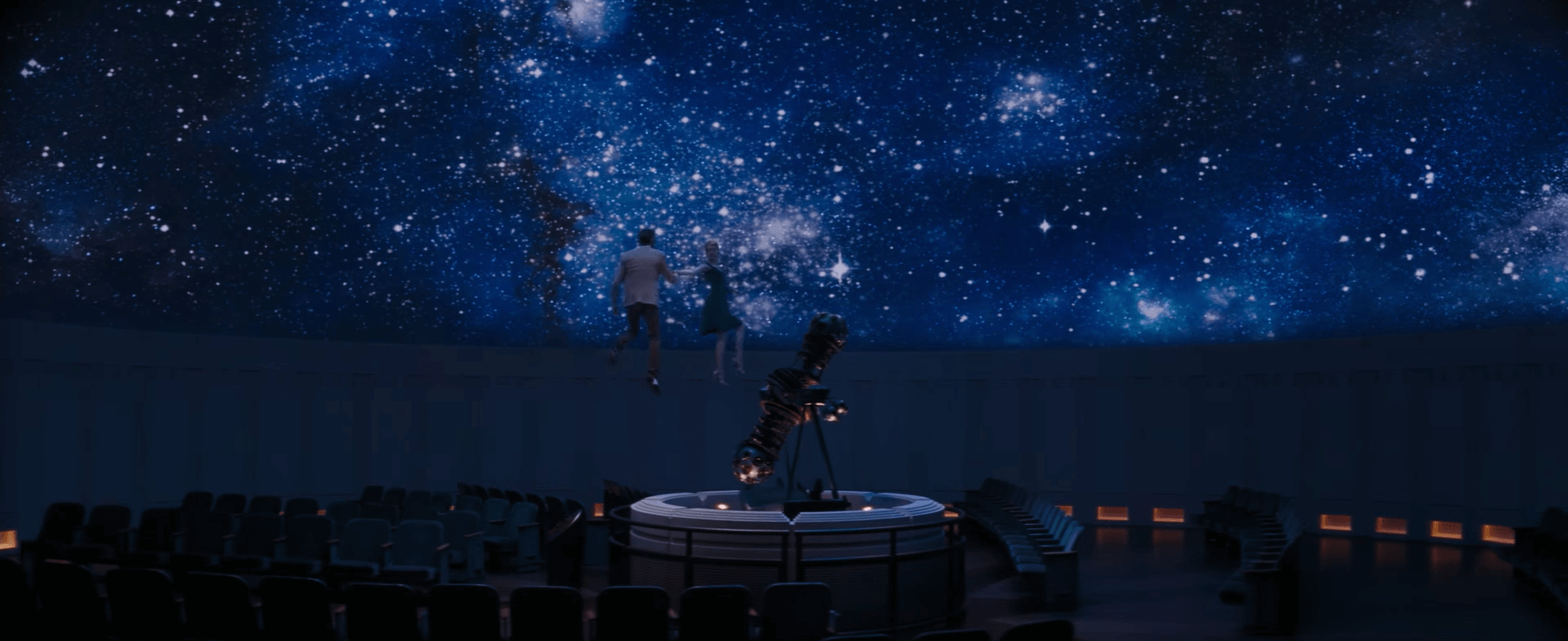
This is when La La Land’s aesthetic filmmaking techniques begin to surface with the development of “Mia and Sebastian’s Theme.” The song is first revealed when Mia and Seb don’t know each other yet, and Mia senses a feeling of love at first sight at the jazz bar- the song is calm and original. After they are introduced to each other, they simultaneously spend more time with one another, allowing a change in their relationship as well as how they perceive each other. This is why when Mia rushes to meet with Seb, and when they are both at the planetarium, the version of the song has changed to reflect their feelings for one another.
When they are both at the Observatory, the flute version of their theme could convey a bouncy, fluttering feeling between two people who are not sure of their feelings yet. When they begin to dance as they are lifted into the planetarium’s dome, the same track undergoes a surge in the orchestral instruments, which allows the audience to know that their relationship is deepening with it. This is further proven by the kiss they share after the dance. This was a noteworthy method made by La La Land of artistically communicating the atmosphere and emotions felt with love at first sight and its progression through time.
Careers And Struggles In La La Land
After multiple get-togethers and dates, Mia and Seb decide to move in together. Their joy is reflected through the repetitive artistic theme of Mia’s outfits in color theory; on many of their get-togethers, she is seen wearing at least two solid primary colors. This could mean that Mia is quite literally Seb’s “color” in his life, encouraging him to follow his dreams and passions. Yet, it could also just be an input made by the director to incorporate visually pleasing scenes. At this point in La La Land, Mia has decided to pursue a one-woman play and Seb to perform regularly at a jazz club. Things start to fall apart when Seb is invited to join a band with a former bandmate where the music does not fit his style.
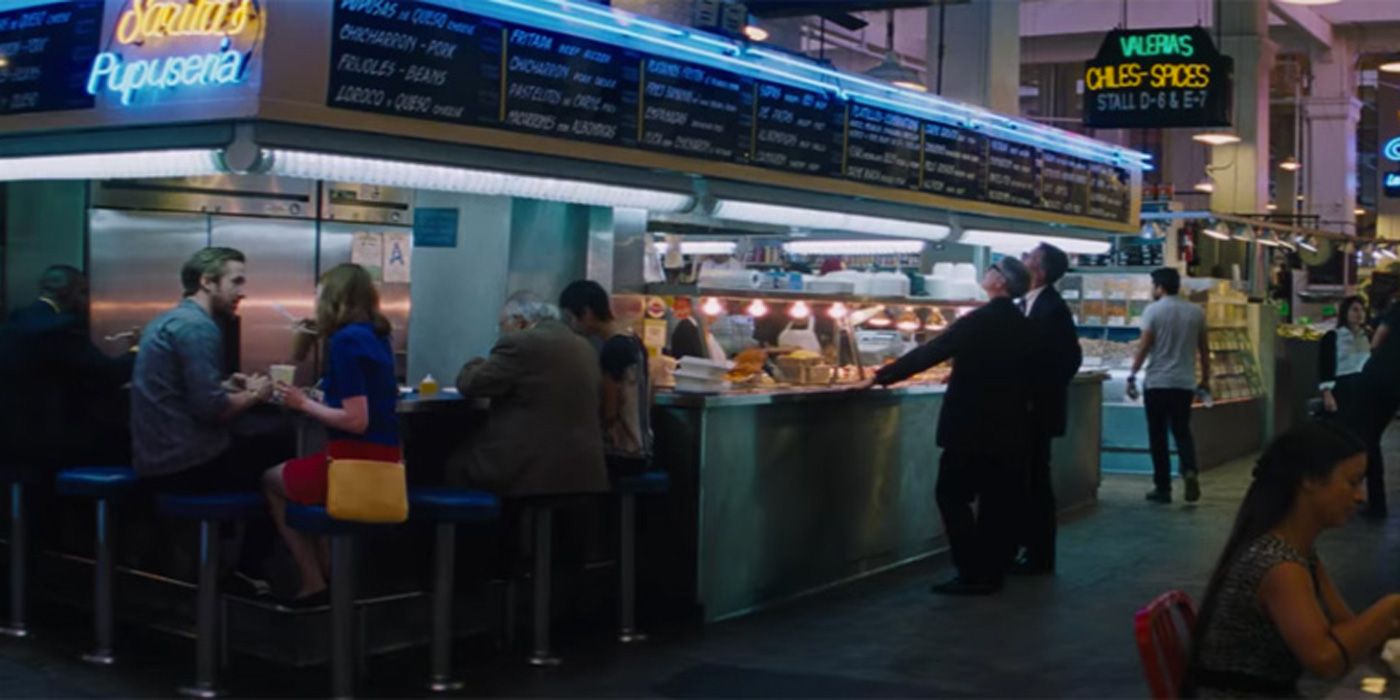
Yet, he chooses to join the band after he overhears that Mia promised her mother that he would be getting a job with a stable income. At the same time, Mia is busy screenwriting and developing her one-woman play. We see a contrast to the events happening with each character as one is following their dreams and passions while the other is following what they think their partner might want for them. Seb then decides to plan a dinner with Mia that goes South after an argument emerges over their careers and miscommunication over what they both wanted. Mia accuses him of abandoning his life-long dreams for performing music that he doesn’t enjoy, and Seb frustratingly accuses Mia that she liked him more when he was unsuccessful.
Nevertheless, their bond had never broken. When in a photoshoot with his jazz band, the photographer suggests that Seb play something on the keyboard to capture a candid photo- to which he responds by solemnly performing “Mia and Sebastian’s Theme” with only his right hand. The progression of their theme corresponded with their relationship- the song started originally mellow and calm, then got intense when their relationship had been at its peak and is now conveying a “singular” feeling with Seb’s interpretation of the theme by playing with only one hand. Seb still makes an effort to visit Mia at her one-woman play, only to, unfortunately, see that Mia is distressed from an empty audience and from overhearing criticism on her show. Mia, exasperated and hopeless, heads to her parents in Nevada, her childhood home.
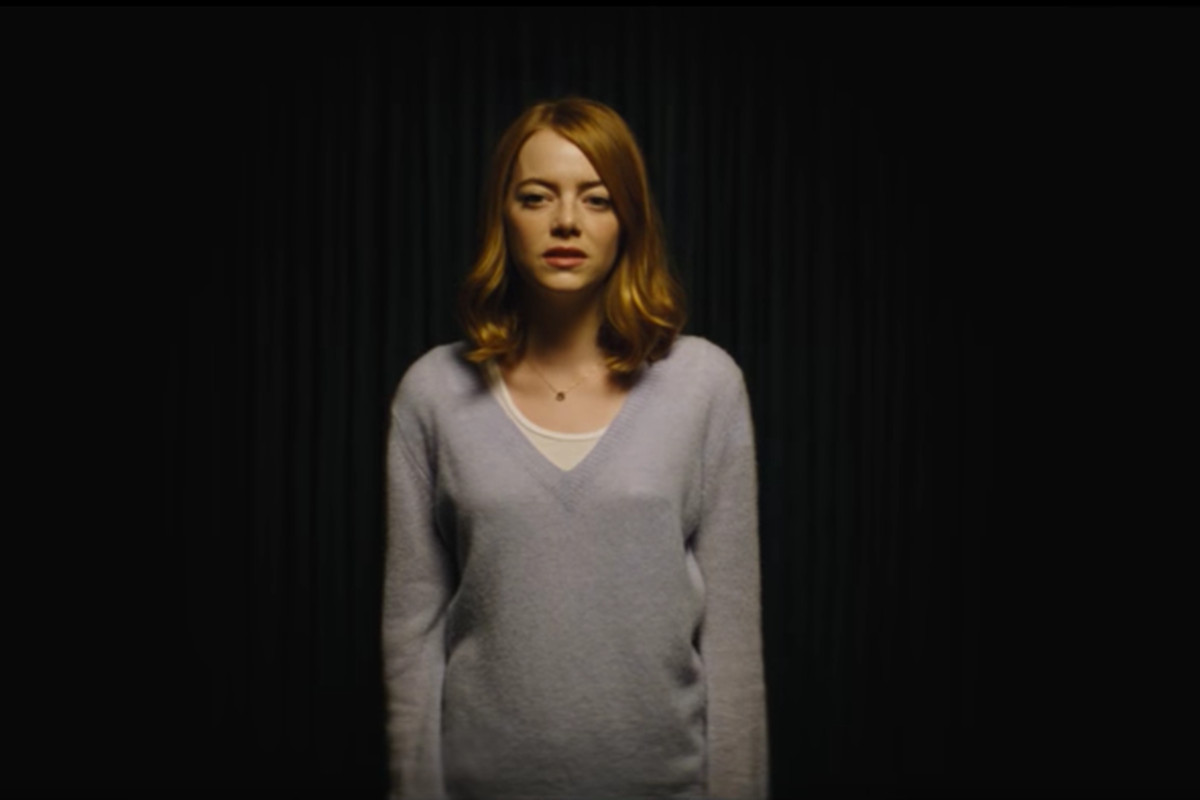
All was not lost when Seb received a call from a casting director who had attended Mia’s play, requesting an audition with her. Seb drives hours to Mia to persuade her to come; she does and attends to perform her audition that she was, ironically, not prepared for. They ask her to “share a story,” and she is taken aback by the request. This could be because she had constantly tried to fit into a role that was predetermined for her in all her other auditions. With this audition, she had sung a song that reminded her of her aunt in Paris, something personal to her. After the audition, Seb, who was certain that Mia would get the role, had encouraged her to follow her dreams in acting. The two silently but knowingly professed their undying love for each other and had inevitably agreed to part ways and focus on their own passions in their careers.
Epilogue
Five years later, Mia revisits the cafe she used to work at. As she orders a coffee, the barista offers to put it on the house, but she declines. This scene reflected the same one at the beginning of the film, with Mia as the barista and a different well-known actress in her current place. It is revealed that Mia is married and has a kid. She and her husband go out to spend a night at a luxurious restaurant. A good feature to point out is that when they are driving, there is a significant level of traffic, similar to the one shown at the beginning of La La Land. This is an artistic element of repetition and comparison, which could convey the idea that even though Mia reached her dreams, there are still so many others struggling that are currently in the position where she once was.
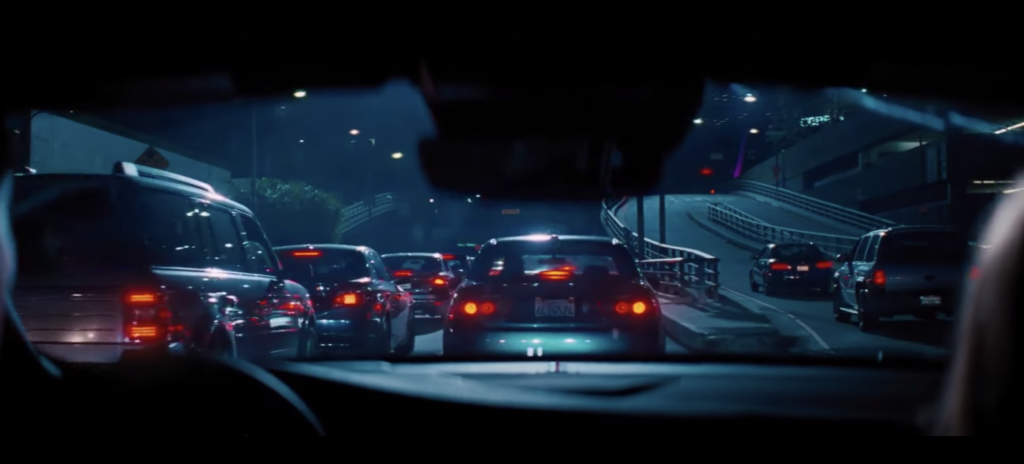
As they walk back to their car from their dinner, they overhear jazz music playing from inside a venue. Mia’s husband offers to go check it out, and she agrees. Yet, she is surprisingly greeted with a shock at the entrance when she comes face to face with the logo she designed for Seb to open his own jazz club. This could be taken as the literal idea of Mia coming face-to-face with her past, a clever placement of the artistic theme. She is starstruck as she walks through the club and is still dazed as she takes a seat with her husband to watch Seb perform the next piece. As Seb steps up on the stage, he is seemingly comfortable and in place until he meets his eyes with Mia.
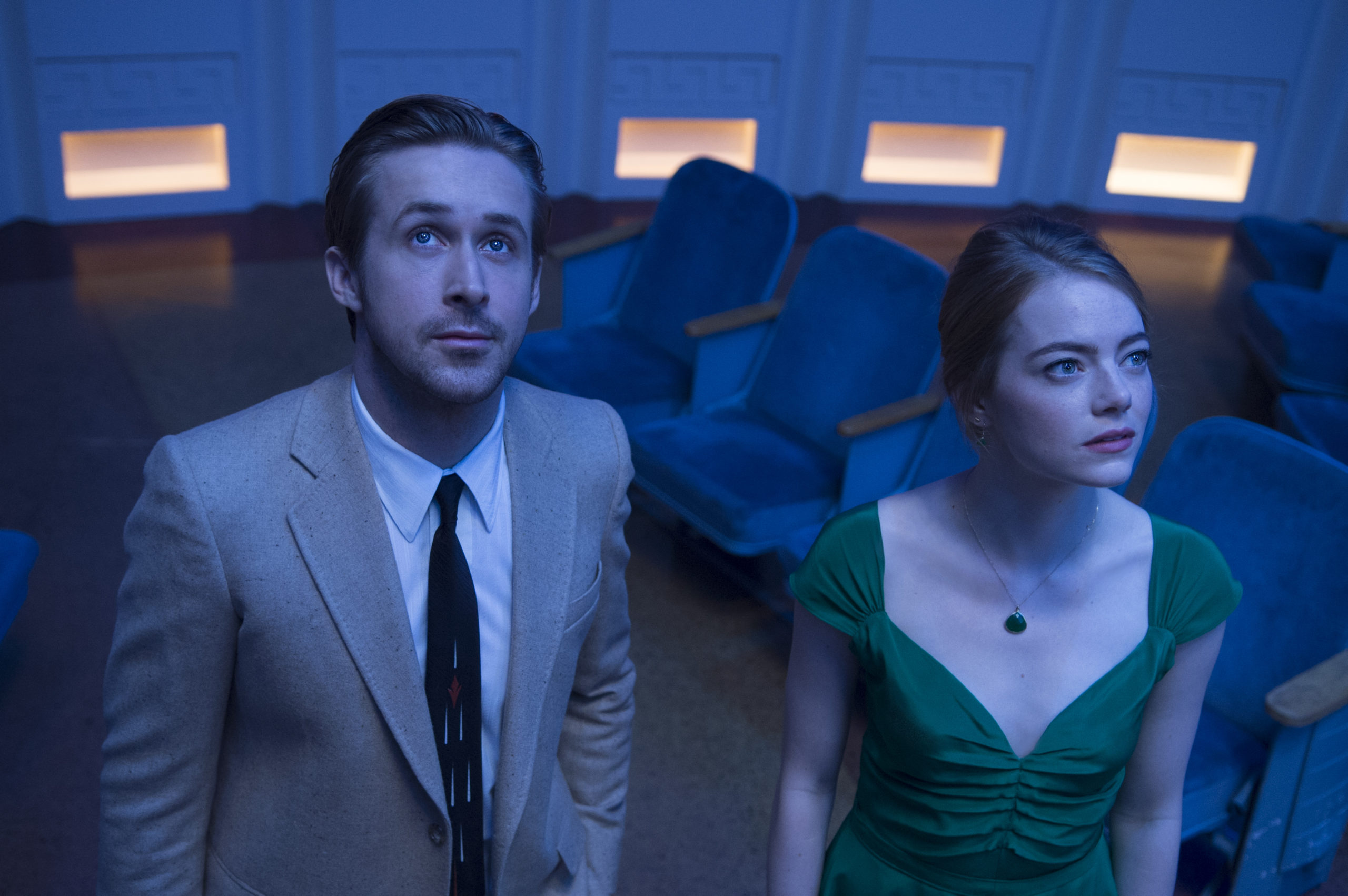
His words faltered, but he continues to speak. When he sits at the piano, he starts to play the melody of their classic theme. The artistic lighting theme is applied, here again, spotlighting both Seb performing their theme and Mia listening attentively. As Mia admires Seb’s performance, she starts to imagine a timeline that showcases what could have happened if their lives had crossed at an appropriate time. We begin at a familiar setting, with Seb performing at the jazz club he used to work at and where he and Mia shared their first (official) encounter. He finishes performing the piece, which ended on a content note instead of the rushed, stressed ending in the original theme. But when Mia approaches him in this alternate reality, Seb suddenly kisses her, a strong contrast to the original reality, with a surge in the orchestral theme.
La La Land takes us through the reality that would have occurred between our two lovers had things gone by perfectly. They embark on dates and get-togethers, Seb attending Mia’s one-woman show with a fully booked audience while Mia helps Seb with his club’s opening. Mia attends the audition offered to her by the casting director and receives the role with Seb by her side. Traveling to Paris together, buying a house and living together, having a kid- all of these events occur in this reality. We are guided through up until this very night, where instead of Mia’s current husband, we see Mia and Seb visit the jazz club. They sit together to admire the pianist, who is not Seb.
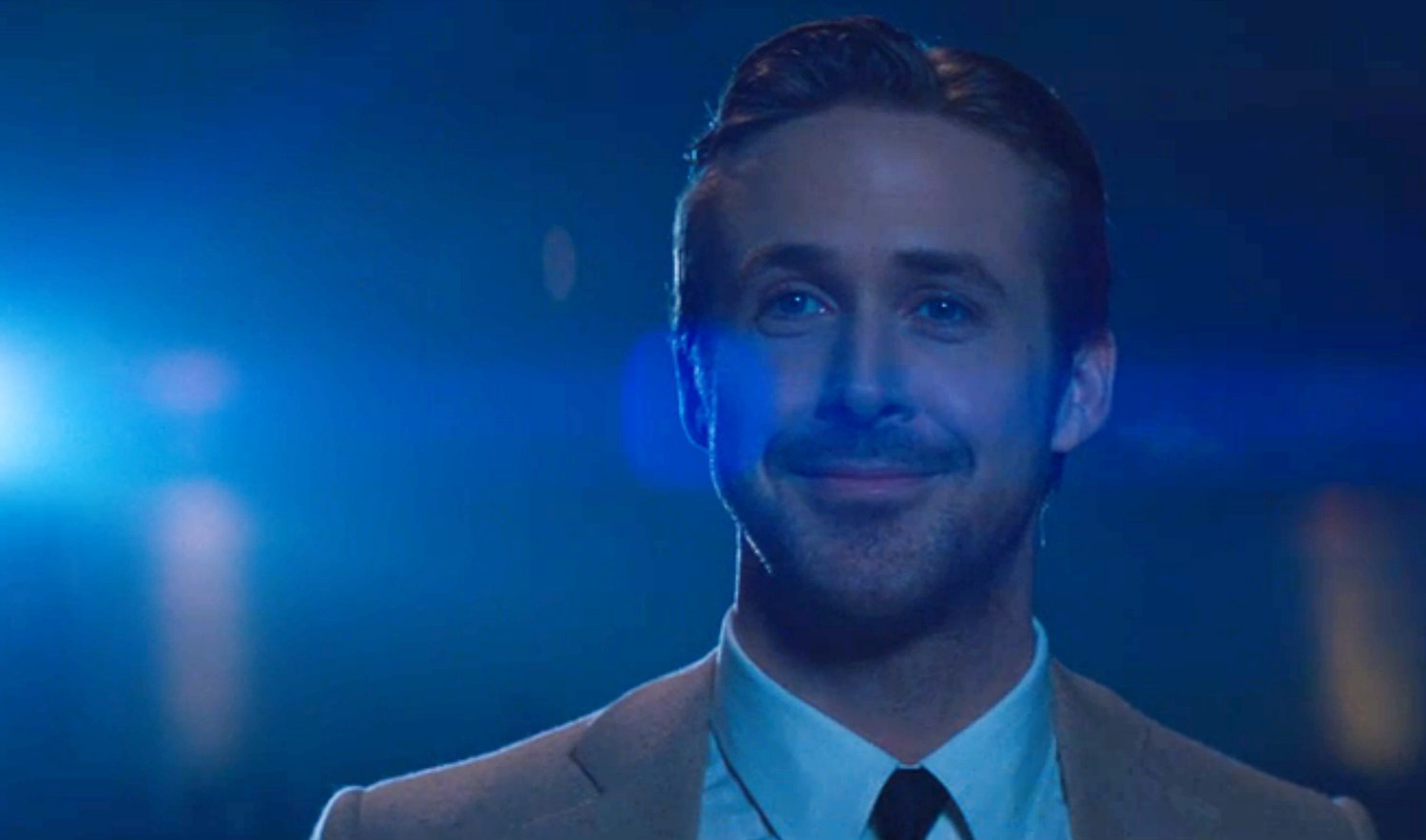
The camera then pans out to swiftly halt the fantastical dream that could have occurred between them to reveal Seb playing their theme in the original timeline. What is important about this scene is that Seb does not end their theme on the correct note- he stops playing on the second to last note. This artistic interpretation of Seb not knowing how Mia and his’ relationship could have been like if they had stayed together is represented beautifully with this alteration in the music. Mia is figuratively “woken up” to reality by the applause of the audience and her real husband around her- an artistic addition to the theme of fantastical and other-worldly aspects of La La Land. Taken aback by the experience, she offers to leave the club; however, she turns to give one last look to Seb before she is completely gone. He exchanges it, and they share a message that was communicated solely with each other. This exchange could be taken as a sign of contentment between the two of them- although they weren’t still together at the end, they had achieved their dreams, which is what they both wanted for each other. They acknowledged that it could have gone one way or the other- with each other, or without, and in this reality, it went with the latter.
A Reflective Ending In 2016’s La La Land
Unlike most movies set in Hollywood, La La Land concludes in a way that is far from the traditional “happy ending” that we usually receive as the audience. It is something to think about- Mia became a successful, famous actress, and Seb got his own jazz club- so what’s the issue? Why do we, as the viewers, still feel as if this was a sad ending? La La Land strategically and artistically designed the development of the film to leave a confusing hole in the watcher’s hearts, wondering why they didn’t feel satisfied with the ending- because it conveyed what most movies tend to avoid; reality. The alternative perspective on “Hollywood Dreams” was showcased in a new light with Damien Chazelle’s La La Land (2016). Its incorporation of artistically inclined themes and visually pleasing aspects allowed for an extraordinarily monumental film.
